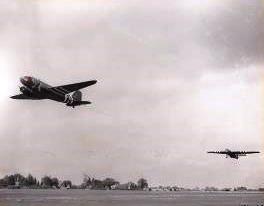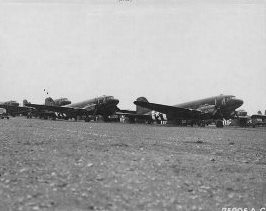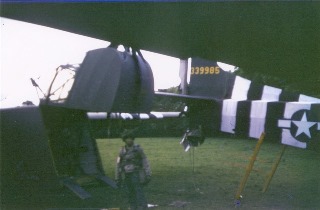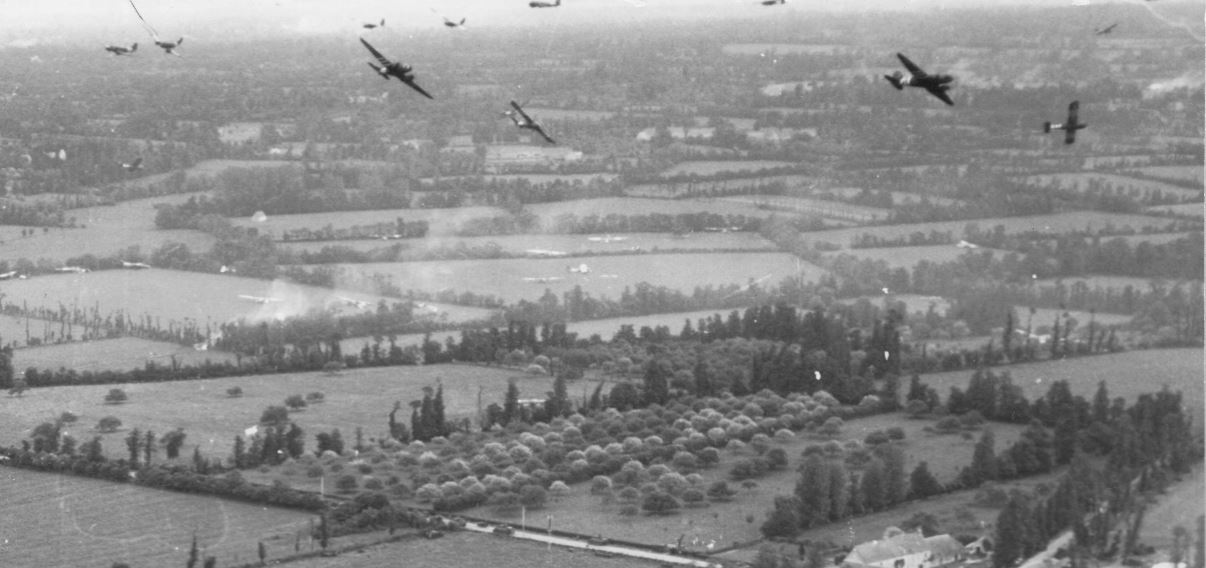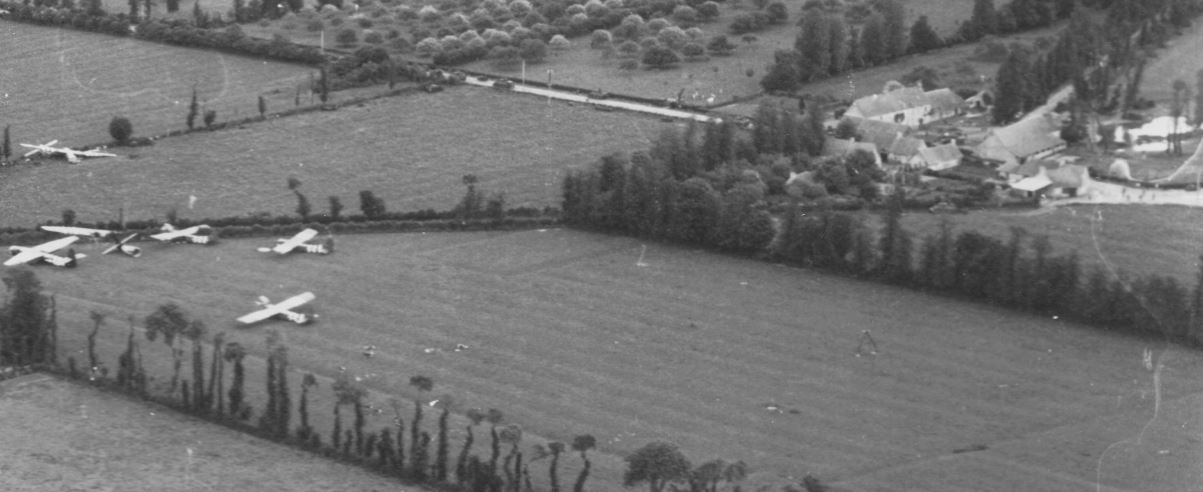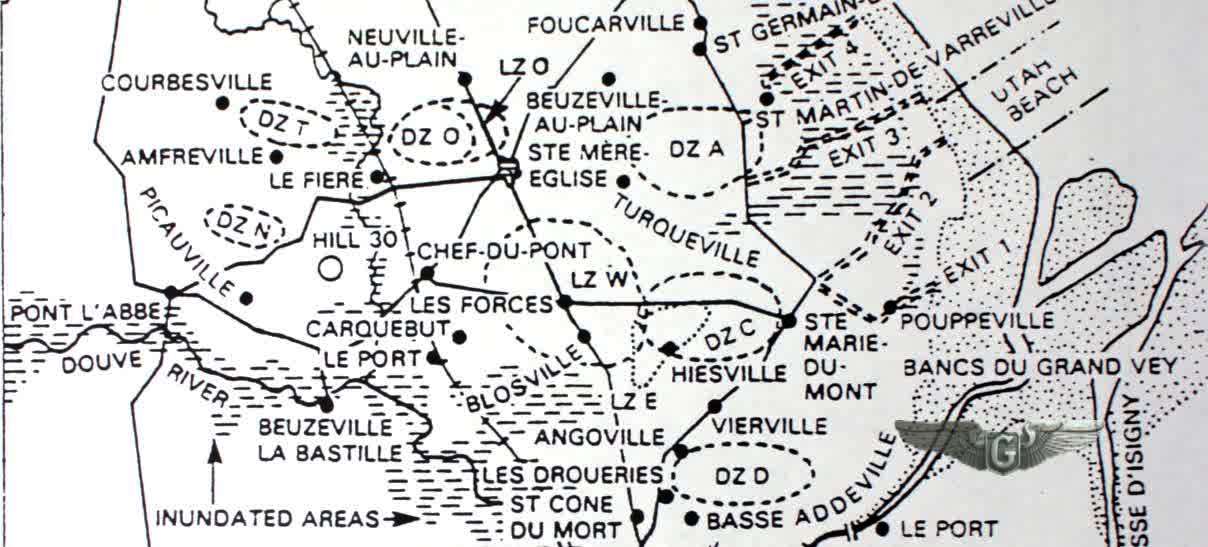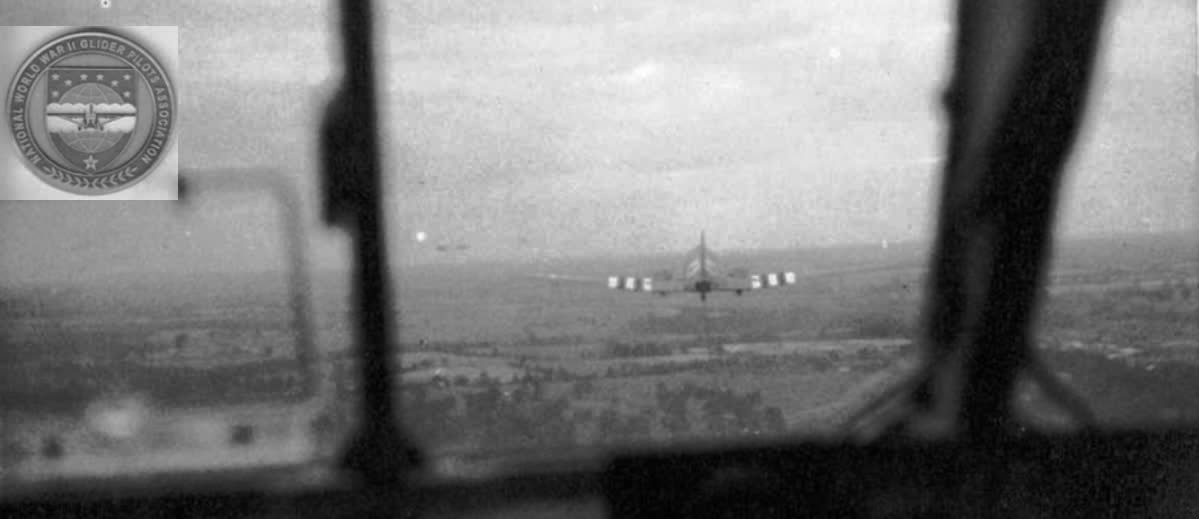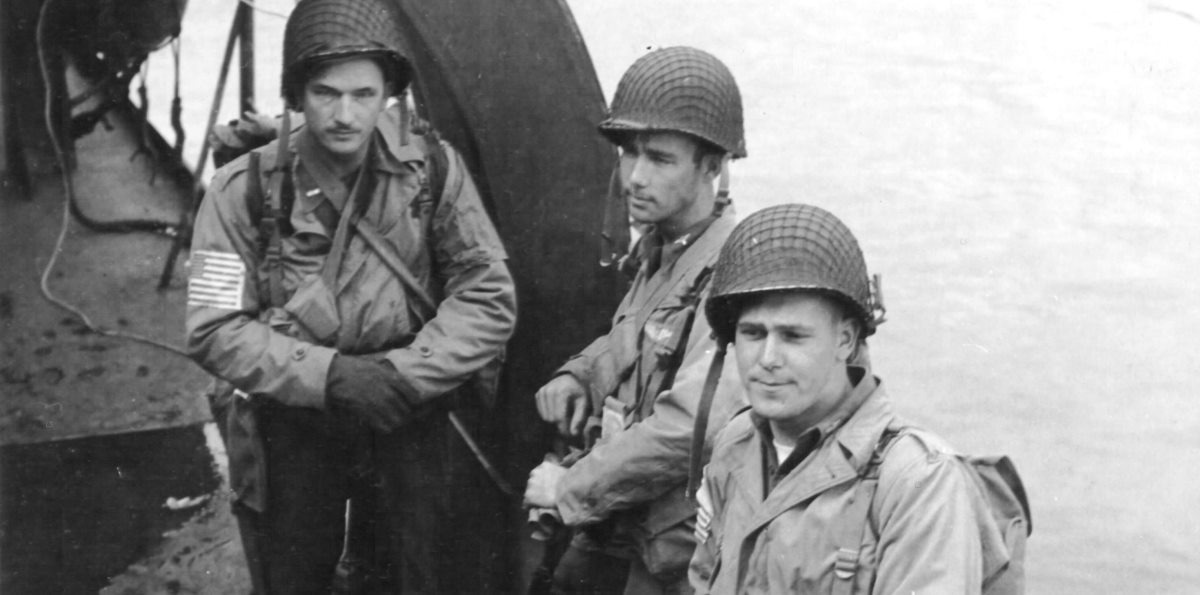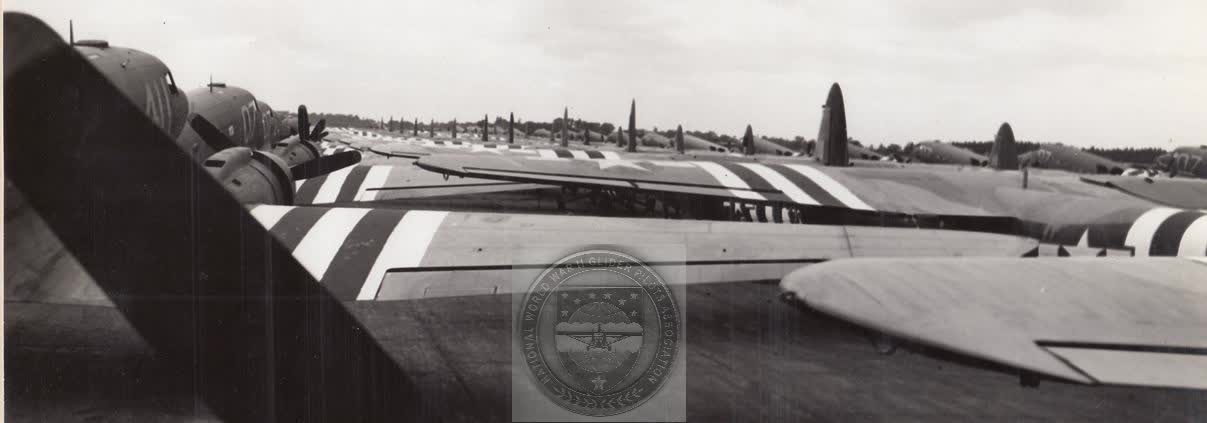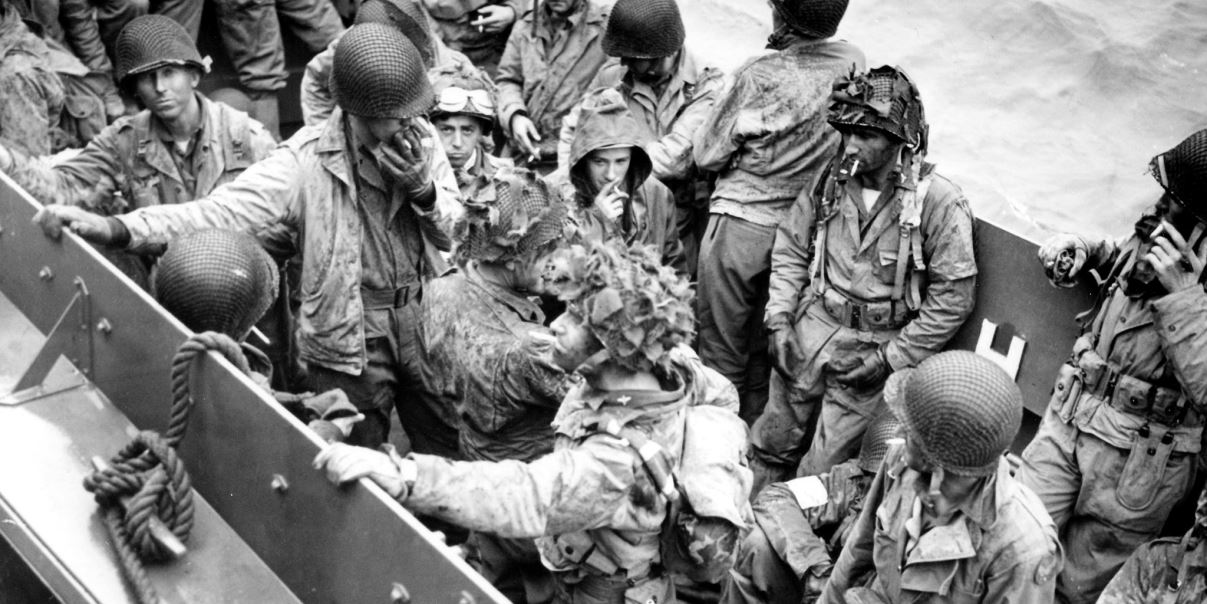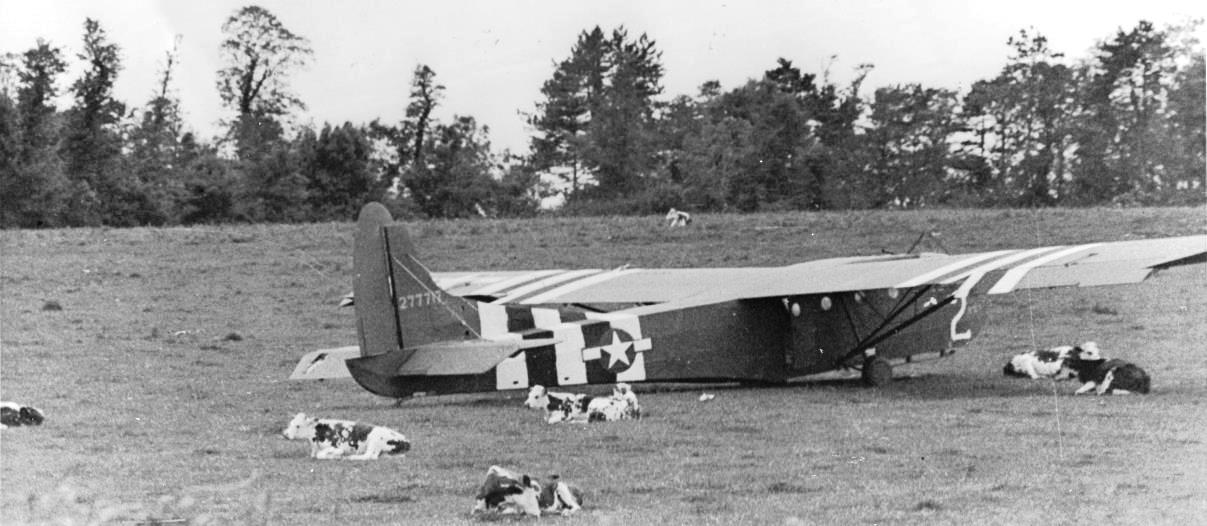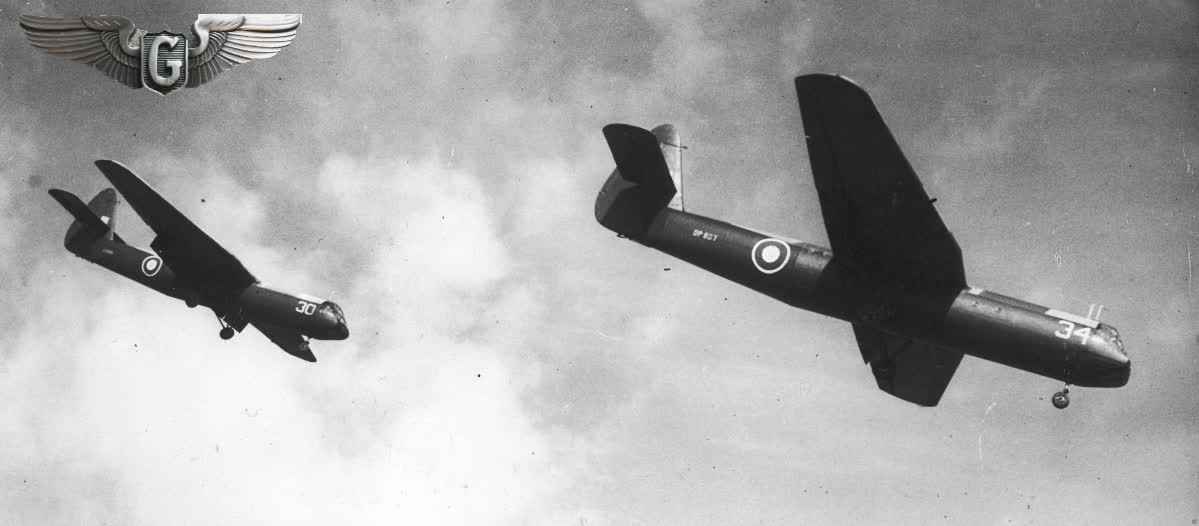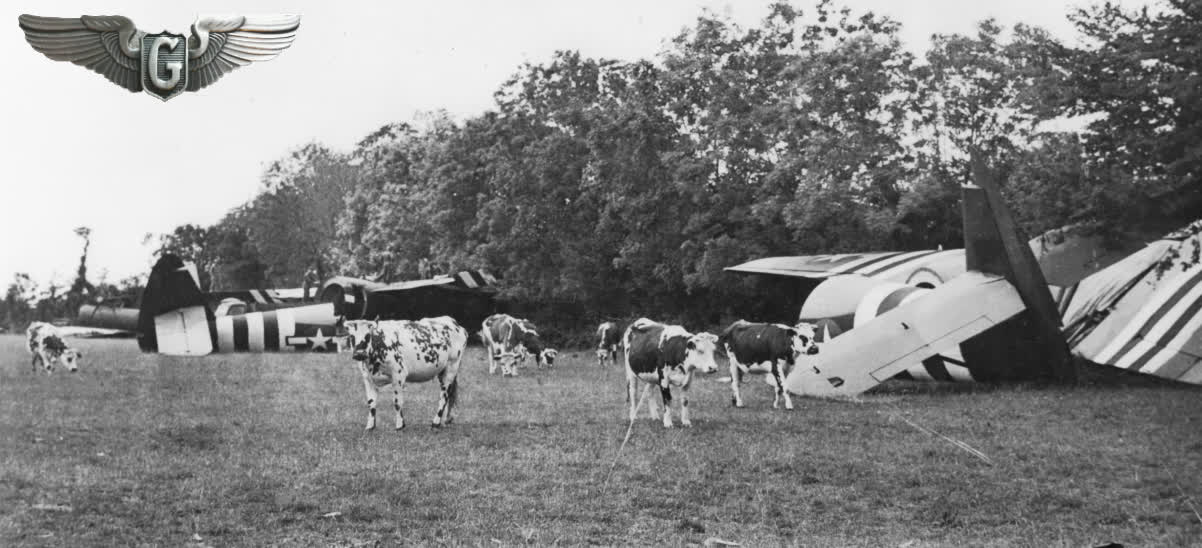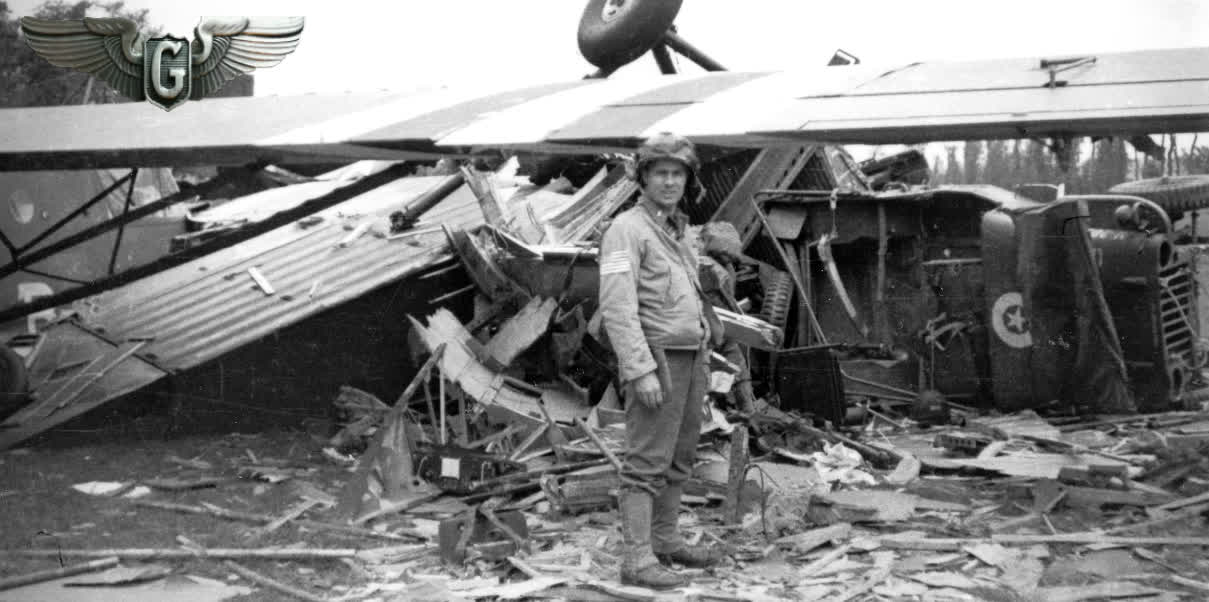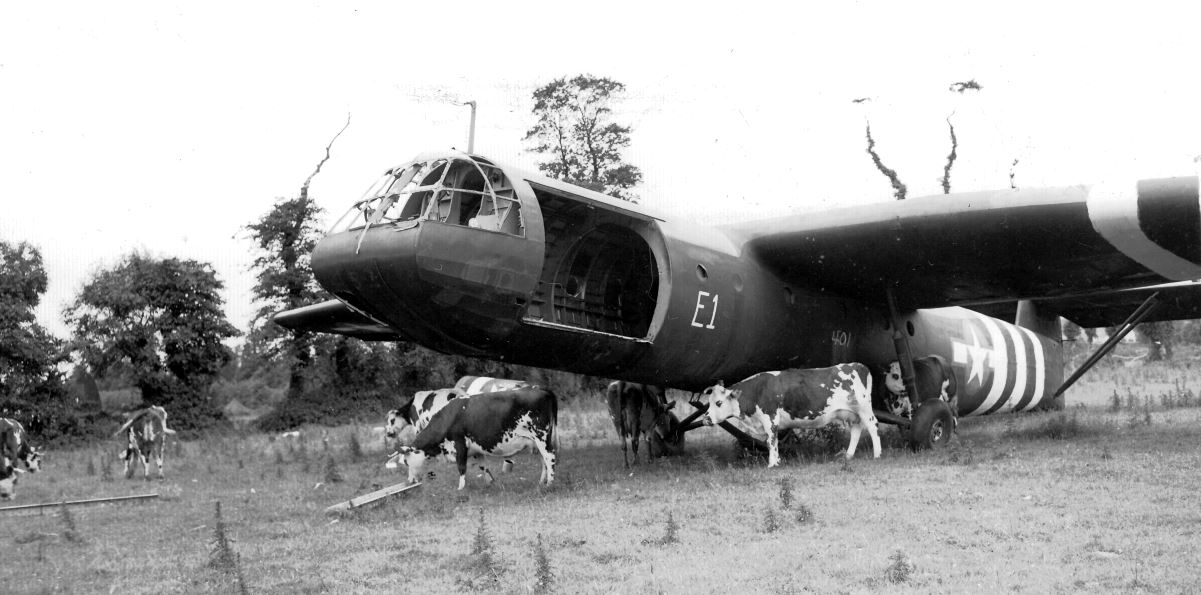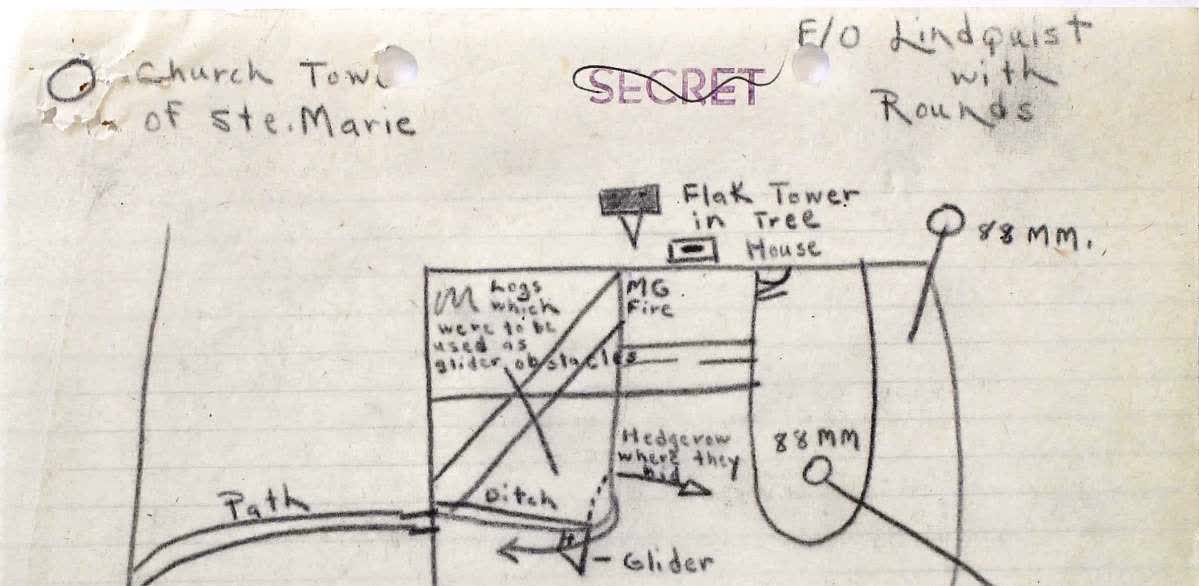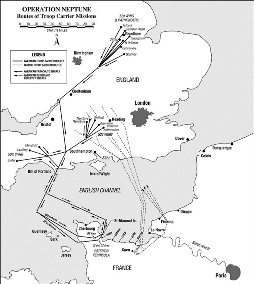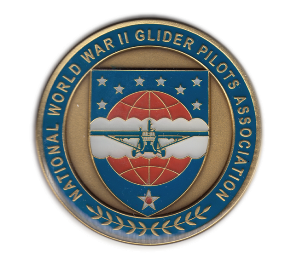85th Troop Carrier Squadron / 437th Troop Carrier Group
NORMANDY OPERATION SERIAL #28 Formation Position No 3
Glider and Crew:
1st Lt Evans A ITTNER, Pilot
Flight Officer Richard G LEVERING, CoPilot
Serial No.: 28
Chalk No.: 003
Glider: 42-62740 WACO CG-4A built by: Timm Aircraft
Glider Load:
Captain Nock W RUSSELL
Corpral Floyd E MAPES
1-1/4 Ton Jeep
1 Net
2 Sets SPTP
1 Can Water
1 Radio (610)
1 " ( " )
20 rds of AT.GY [anti tank grenades]
Tow plane and Crew:
Tug: Douglas C-47 42-15160
Pilot: Lt Col Lucion N POWELL
(Deputy Flight Commander, Right Column Leader
Co-pilot: 1st Lt Robert B FUNDERBURKE
Navigator: 2nd Lt Lee M SHURGOT
Crew Chief: S/Sgt David D. MURR Jr
Radio Op: Sgt John R PENNING Jr
Report:
Flight enroute O.K. Came in about 1 mile south of Landfall. Just before we hit the
coast the navigator said, " We're about one mile south of course." The pilot, Colonel POWELL, said we could make it up on way to LZ. The line apparently cut as we had no further communication with the tug. We descended through the overcast. No shots were fired directly at us until after making land fall, and then all hell broke loose. Looked like five guns were pyramiding a cross fire and we had to fly through it. We were hit often. We descended through the overcast and emerged about two miles from L. Z. A couple of F. W. 109s or Me 109s strafed us and the second one was set upon by a P-38. The 2nd fire got the controls on our right aileron. It also hit the tow rope and the rope was spinning and unwinding. By this time we were pretty close to the LZ and were receiving ground fire which blew off our rudder control. I saw a field, tried to turn but had no control. I got the left wing down and made a shallow back at 180 degree, turned to a field that looked suitable, being shot at all the way down. Meanwhile we had received the blinking green light when the rudder control was shot out. I landed over a double row of trees into a short field (400’) and used the arrester chute. We hit the bank on the opposite side of the field and busted the nose of the glider. The jeep broke loose, rolling forward pinning Dick (co-pilot) and myself against the nose and the bank. (Landed about 0400).
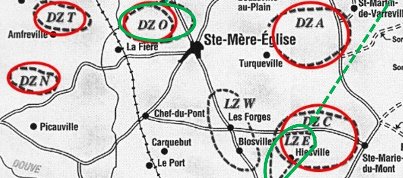
My passengers, Airborne Captain Nock W RUSSELL and Cpl. Floyd T MAPES, were in the jeep. The jeep bent in the middle and pinned them in the seat. [John Leon] SCHANCK 1 and [Leon Chestnut] STONE had landed in the same field about 400 feet north of us and sent one of their airborne passengers, a sergeant, to help us. He helped to get me out and I don't remember all the details of this particular time. He then worked on Dick and finally got him out. I snapped out of it about fifteen minutes later and we laid Dick out after finding that he had broken or fractured his ankle, he was unable to walk and was pretty groggy. The Corporal was then released from the jeep without too much trouble but the Captain was unconscious and pinned for about an hour while we worked to get him out. He was in great pain and semi-conscious. We finally got him out by cutting a hole through the roof and sliding him down the wing which had bent around close to the fuselage. We used the aileron for a stretcher and removed the Captain with the aid of a few paratroopers who had joined us. SCHANCK and I carried LEVERING on a gun to a hedge row and ditch for cover. Meanwhile there was fire in most all directions, although we were receiving no direct fire. We got a couple of Bazookas and had
grenades and holed up in the ditch. The Captain was given two shots of morphine without effect. Later we gave him neither. He had a broken hip, crushed knee, broken leg, chest crushed and face bunged up. The Corporal walked up but later passed out. We didn’t know where we were and remained in this spot for about four hours. I gave a French kid that came along two hundred (200) francs to take a note seeking aid to Americans who were, he said, over the hill behind the German lines.2 But after an exchange of notes no medical aid was available.
SCHANCK, Private NICOLE, an airborne passenger, and the messenger were looking for aid but returned with a horse and buggy. We Loaded LEVERING, Captain RUSSEL, and the Corporal and started out to a hospital, being led by the French messenger and an old man. I was walking as best as I could, but couldn’t keep up with them, so told them to go on ahead while I waited at the cross-roads for them to come back. (S/W of the landing field)
They went on South to the town of Carquebut. While on this cross-road I et Captain EVANS and a couple of Airborne Lt. Colonels. They were coming back from the bridge at Chet du Pont which was held by the Germans. Captain EVANS went north to look for the 80th Airborne Division. Meanwhile a column of 15 paratroopers came by with a jeep and I got a lift in the jeep down to the bridge. We couldn’t do any good so went back to the cross-road. The old man with the horse and buggy, came back, picked me up. We returned to our original position to pick up SCHANCK, STONE and Paratroop sergeant. Then we went to the hospital in a church at Carquebut at about 1500/ They gave aid to the Captain and bought us some cognac.
SCHANCK and STONE went out to check up. Returned with news that Ste Mère-Église was in German hands, machine gun nests sought of the town. The French civilians were very helpful and cooperative. They gathered parapacks and ammunitions and also supplies dropped by subsequent runs and stored them in barn for the American troops. We stayed in the hospital overnight. The next morning we saw the gliders going east of the town as SCHANCK and Stone headed for the direction in which they thought the gliders were landing to look for the CP. When we got there we found out where the First Aid Post was and went on down to report our injuries. A jeep picked up LEVERING and the Corporal took them to the station, then returned for the Captain and myself. We were treated here, I was tagged and after waiting, took off for headquarters looking for Glider Pilots. SCHANCK and STONE and myself got about 30 Glider Pilots together and started to leg it to the beach. Because of my bad leg I got a lift down the road junction and joined 6 paratroops where we engaged a few Germans in a wooded section S/W of Bouteville. After disposing of them I met a Major driving a jeep and got a lift to the beach. I met the rest of the Glider Pilots and reported to the Beach Clearance Office. We then all waded out to a LST. From there we were transferred to a large boat and evacuated to England.
--SOURCE: Intelligence report of Lt. Ittner and F/O Levering 9 June 1944
====================================
1
John Leon SCHANCK intelligence report
2 ITTNER’s Pocket note page 1
ITTNER’s Pocket note page 2
|

